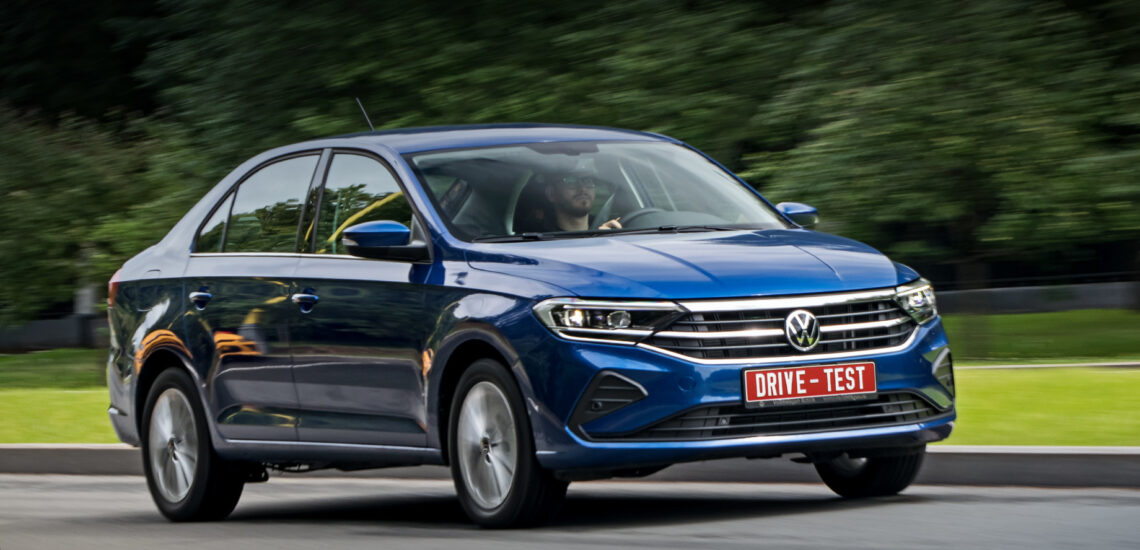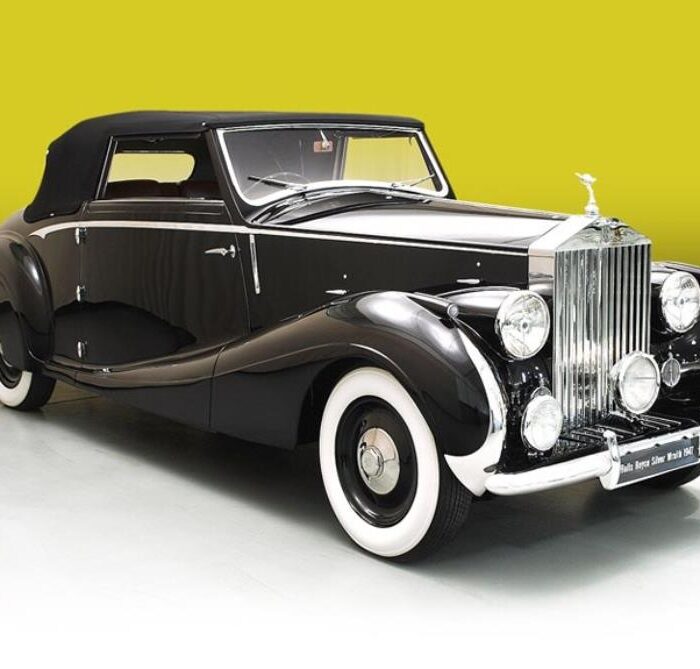El rencor casi se ha ido. Nos hemos acostumbrado a la idea de que en lugar de la plataforma MQB, que es actual en casi todo el resto del mundo, el Volkswagen Polo localizado pasará otra década sobre el viejo chasis PQ25. Ahora es un liftback con una enorme puerta de maletero elevable, y hay tantos cambios respecto al viejo Polo que podemos hablar de un relevo generacional. Pero entendemos que el nuevo coche simplemente se convirtió en el doble del Skoda Rapid que apareció en 2012…
El Polo tiene un aspecto respetable, pesado para los estándares del segmento económico. El carácter se enfatiza con un frente masivo con una parrilla de radiador hinchada y ricamente decorada con cromo. También aparecieron rayas brillantes debajo de las ventanas laterales en las versiones superiores. Todos los faros delanteros y traseros son de diodo, los faros antiniebla están integrados en los principales: estas son las secciones de diodo más cercanas a la parrilla. El Rapid tiene faros antiniebla halógenos, así como luces altas halógenas en las versiones básicas. Y en las versiones superiores ambos autos tienen los faros lenticulares que reemplazan los faros habituales.
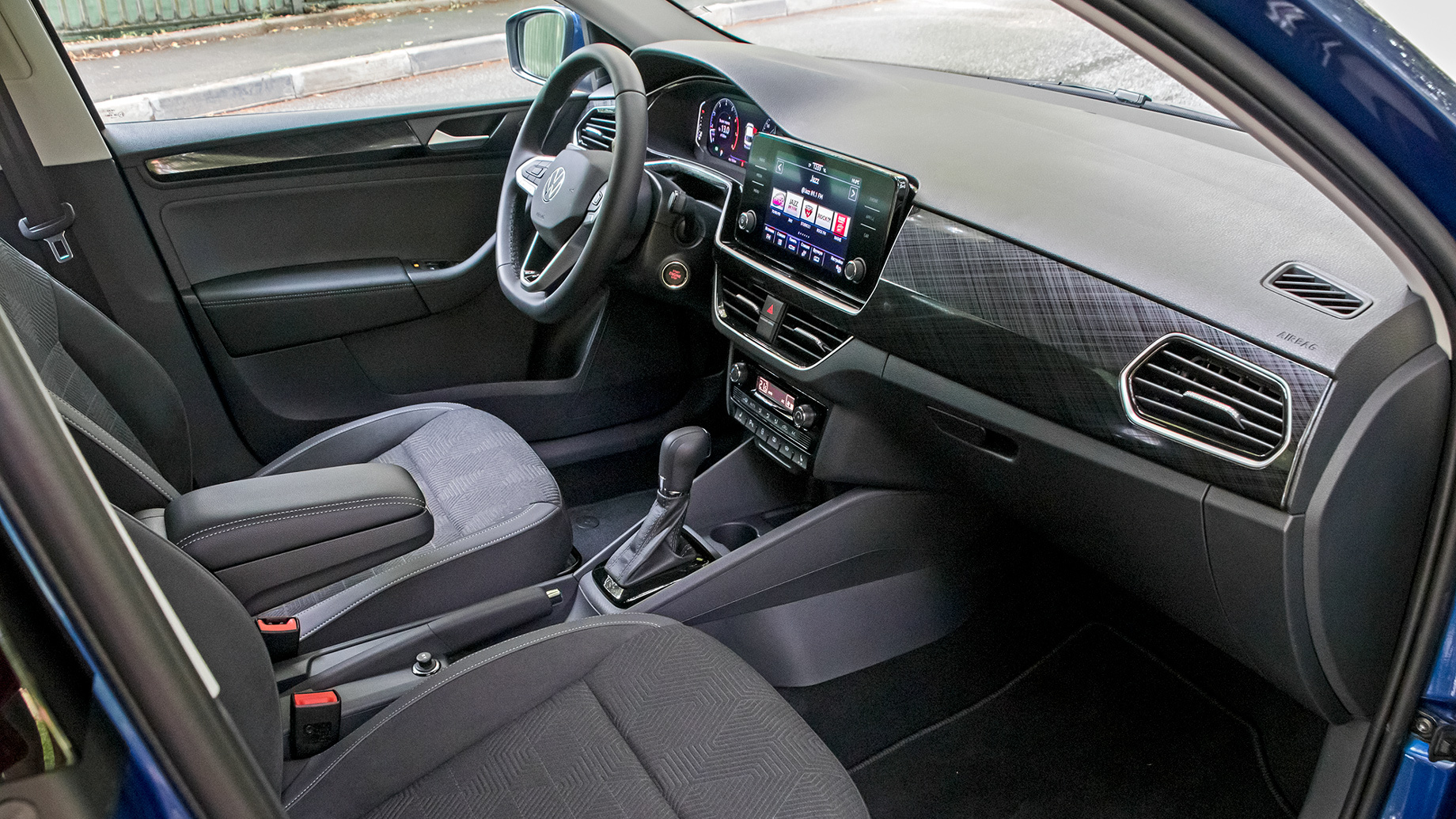
El interior se ve mucho más moderno que el del viejo Polo, aunque solo los asientos y los reposabrazos son suaves. El panel frontal es propio, no del Rapid, pero el sistema multimedia también se desplazó hacia arriba, según las tendencias de la época. La diferencia con el Skoda es sólo una pantalla mate y unos gráficos ligeramente diferentes. Ahora estoy más seguro de que este es el multimedia más vivo y conveniente de la clase. Mientras el Rapid espera su turno, el Polo ya ofrece un panel de instrumentos electrónico, al igual que en el Jetta. Aunque con un mínimo de opciones de diseño, los competidores no tienen nada similar.
Un volante con un borde grueso ligeramente ovalado y con veinte botones, incluido un claxon, es bueno. Sin embargo, la llave de los asistentes del conductor es falsa. El Polo aún no tiene el sistema de frenado automático ya instalado en el Rapid y cuando usted lo presiona, aparece el mensaje “La llave no funciona”. Los propietarios de Volkswagen llaman a este volante “del Golf 8”, aunque el disco del cubo del Polo es más barato que en el mencionado hatch. Lo principal es que el Passat tiene uno similar hasta ahora. Es tan agradable sostenerlo en las manos que parece que tiene un ajuste más cómodo. Pero no, desafortunadamente, el volante no se movió más cerca del asiento.
Los asientos han recibido algo de soporte lateral en comparación con la generación anterior. Sin embargo, el bastidor está unificado con el Rapid, lo que significa un hundimiento en la zona lumbar de los pasajeros delanteros y ningún ajuste del apoyo en esta zona. El cambio al interior de Skoda también ha mejorado las propiedades de los asientos traseros. Hay más espacio para las rodillas, los reposacabezas en forma de L en lugar de los clásicos ya no obstaculizan la visión hacia atrás, y hay lujos como un reposabrazos central y una escotilla en el maletero para objetos largos. También son una rareza para los coches económicos.
Al sentarse en el asiento del conductor, usted observa limpiaparabrisas sin marco y espejos extendidos de Skoda. Sin embargo, el izquierdo ya no incluye la zona de punto ciego. En general, no hay dudas sobre la visibilidad, y la cámara de visión trasera que se esconde de la suciedad en el emblema es una delicia. ¿Pero por qué el limpiaparabrisas trasero es un extra opcional, incluso en la versión Exclusive con el máximo equipamiento?
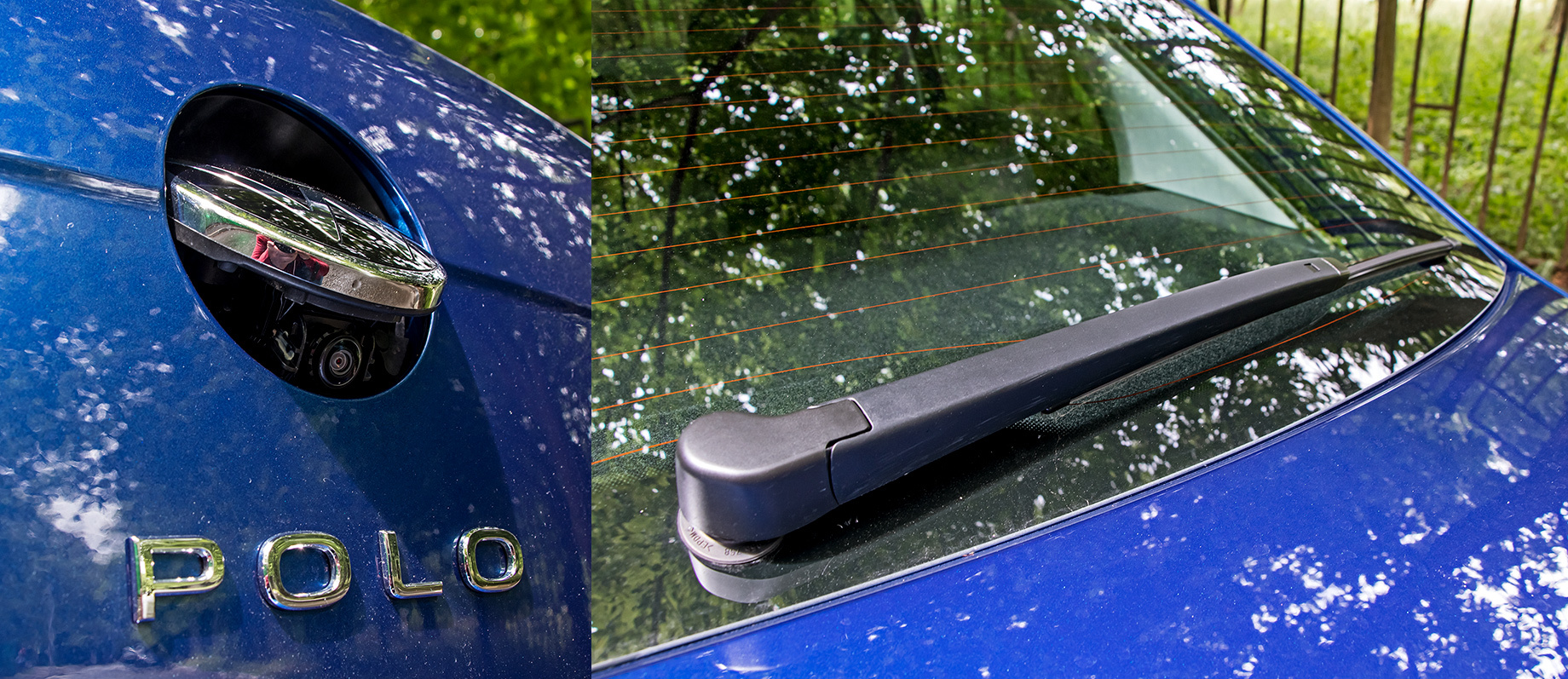
En general, todas las diferencias entre el nuevo Polo y el Rapid actualizado radican precisamente en los matices de la configuración. Hablaremos de eso más tarde porque necesitamos decir algunas palabras sobre las sensaciones de conducción. La primera prueba duró solo 40 minutos, pero mis impresiones fueron confirmadas por las historias de los técnicos de Volkswagen. Los trenes motrices, las configuraciones del chasis, los tamaños de las ruedas y los frenos son los mismos que los del Rapid.
En comparación con el viejo Polo, los resortes son algo más suaves, pero las barras estabilizadoras están comprimidas. La suavidad de marcha realmente ha mejorado un poco: el Volkswagen es menos sensible a todos los baches, aunque todavía no deja que se olvide de ellos. Por desgracia, el principal inconveniente de la plataforma PQ25 es la potencia insuficiente que no ha desaparecido. A la velocidad del automóvil más de 30-40 km/h el reductor de velocidad de goma golpea debajo de modo que parece que las barras oscilantes saldrán por el capó. Como antes, el Polo no es un luchador fuera de las ciudades con calles planas.
El aislamiento acústico se ha mejorado en parte por el hecho de que el cortafuegos ahora está cubierto con la alfombra sólida original. Antes estaba unificado con el Polo europeo, y tenía agujeros adicionales para las versiones con volante a la derecha. También se ha reforzado el aislamiento del techo. No sentí cambios cardinales, especialmente porque obtuve un automóvil con un motor 1.4 TSI y su zumbido característico, pero tampoco noté una fuerte presión en mis oídos a velocidades de hasta 90-100 km/h. Esperaremos pruebas completas para obtener conclusiones finales.
Ahora se puede arrancar el motor con un botón ubicado en la zona de la cerradura de encendido, a la manera de Skoda: el acceso sin contacto ha aparecido en las versiones superiores. El dúo del motor turbo de 125 caballos de fuerza y la caja de cambios semiautomática DSG va rápido y sensible. No se puede comparar con el 1.6 de 110 caballos de fuerza y caja de cambios automática que aceleraron lento y bruscamente al Rapid en nuestra prueba reciente y que definitivamente funcionaron bajo el capó del Polo de la misma manera. No hay dudas sobre los frenos, al menos cuando se utilizan los mecanismos de disco trasero en lugar de los de tambor principal. Pero mientras que el Skoda está equipado con tambores solo con un motor de 90 caballos de fuerza, aquí están instalados en todos los liftbacks de las versiones no superiores, si no paga extra por los discos.
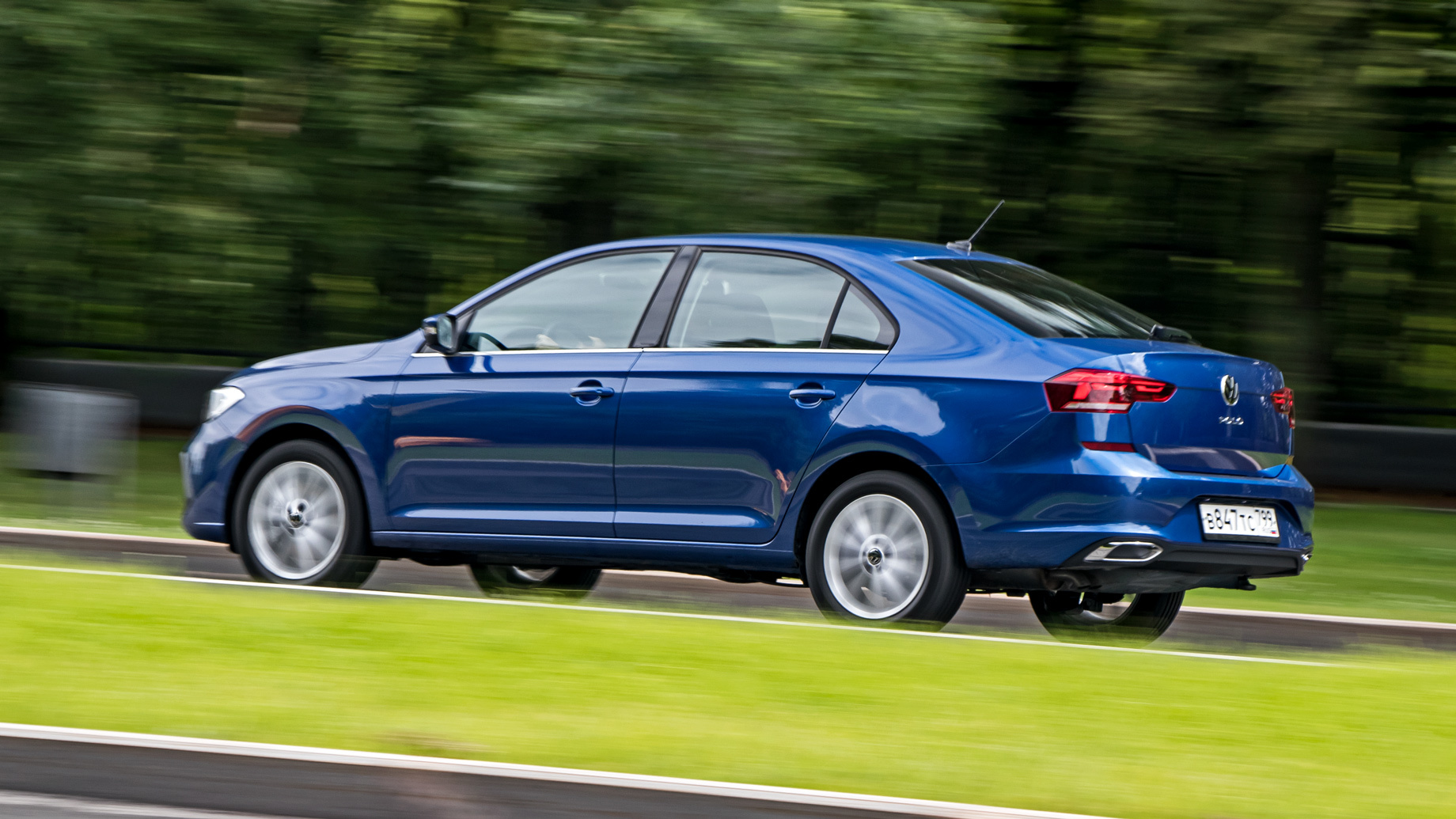
Aquí es donde comienza la combinatoria. Parece que los especialistas en marketing han tratado de presentar el Polo como un automóvil tecnológicamente más avanzado, por lo que se ofrecen dispositivos electrónicos, faros antiniebla de diodo y una cámara retráctil. El Rapid es un bastión de seguridad y practicidad, en la versión mediana hay bolsas de aire laterales y cortinas disponibles, así como frenos de disco en la parte trasera. Los ganchos y las abrazaderas para la carga en el maletero de Skoda (igualmente enorme) no requieren un pago adicional. El sistema de frenado automático y los asientos deportivos sólo están disponibles en él. El Polo y el Rapid tienen más o menos el mismo equipamiento sin embargo tienen precios diferentes. El Volkswagen es más caro.
Personalmente, apruebo todos los cambios en el Polo, excepto por la desaparición de cuatro elevalunas automáticos a favor de uno de conductor. El liftback es más cómodo y más bonito que el sedán. El interior ya no causa desaliento. Ahora es más agradable estar al volante y más suave de conducir. Por desgracia, las lecciones del Rapid no se han aprendido completamente: no hay portavasos, no hay ningún lugar para conectar un teléfono inteligente, los respaldos de los asientos delanteros se hunden. Pero la pregunta clave es diferente. ¿El amor por los sedanes clásicos no es imaginario? Si el Polo Liftback no se acepta peor que su predecesor, quizás otras marcas también dejarán de enfocarse en autos de tres volúmenes.
Esta es una traducción. Puede leer el original aquí: https://www.drive.ru/test-drive/volkswagen/5f16e030ec05c4421c0000db.html

Publicado Octubre 20, 2022 • 6m para leer

